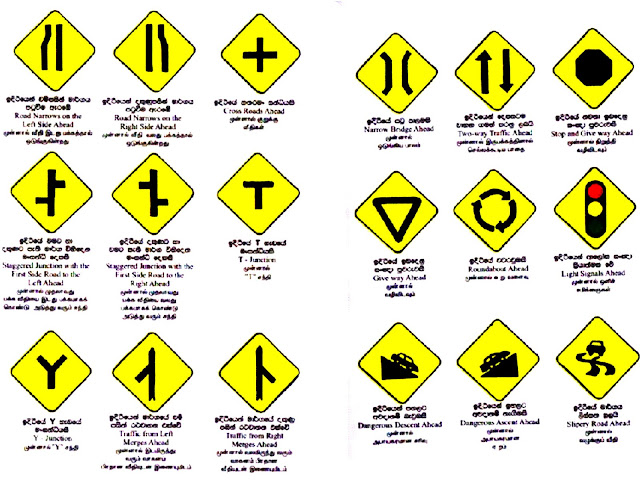

- Road traffic signs and meaning drivers#
- Road traffic signs and meaning manual#
- Road traffic signs and meaning license#
While each nation has its own system, the first approach sign for a motorway exit is mostly placed at least 1,000 metres (3,300 ft) from the actual interchange.
Road traffic signs and meaning drivers#
They often do not appear on lesser roads, but are normally posted on expressways and motorways, as drivers would be missing exits without them. Advance directional signs enable drivers to take precautions for the exit (e.g., switch lanes, double check whether this is the correct exit, slow down). A number of countries do not give information for the road ahead (so-called "pull-through" signs), and only for the directions left and right. Advance directional signs appear at a certain distance from the interchange, giving information for each direction.
Road traffic signs and meaning manual#
In the United States, the categories, placement, and graphic standards for traffic signs and pavement markings are legally defined in the Federal Highway Administration's Manual on Uniform Traffic Control Devices as the standard.Ī rather informal distinction among the directional signs is the one between advance directional signs, interchange directional signs, and reassurance signs.


Information, facilities, or service signs For example, Annexe 1 of the Vienna Convention on Road Signs and Signals (1968), which on 30 June 2004 had 52 signatory countries, defines eight categories of signs:

Traffic signs can be grouped into several types. Countries have also unilaterally (to some extent) followed other countries in order to avoid confusion.Ĭategories Sign warning of cattle crossing in a rural road of Madeira Island, Portugal International conventions such as Vienna Convention on Road Signs and Signals have helped to achieve a degree of uniformity in Traffic signing in various countries. Road sign for roundabout leading to highways 1, 2 and 3 in Mariehamn, Åland Sign in Australia reminding drivers to carry adequate supplies before entering remote areas International conventions Such signs were first developed in Europe, and have been adopted by most countries to varying degrees. Such pictorial signs use symbols (often silhouettes) in place of words and are usually based on international protocols. With traffic volumes increasing since the 1930s, many countries have adopted pictorial signs or otherwise simplified and standardized their signs to overcome language barriers, and enhance traffic safety. Later, signs with directional arms were introduced, for example the fingerposts in the United Kingdom and their wooden counterparts in Saxony. The earliest signs were simple wooden or stone milestones. Traffic signs or road signs are signs erected at the side of or above roads to give instructions or provide information to road users. They can also give instructional warning about a certain situation.Signboard displaying information for road users A " route confirmation" sign on the Warrego Highway in Queensland, Australia, informing motorists of their distance (in kilometres) from the places listed Fingerposts and other road signage in the English village of Sturminster Marshall, near Poole As the name implies, they are signs that warn you about what is ahead. Another variety is the ‘Give Way’ or ‘Yield’ sign, which is an upside-down triangle. Warning Signs – Warning signs are usually triangular in shape, with yellow or white background, black inscription, and red border. Nigeria road traffic signs are divided into the following categories Ī.
Road traffic signs and meaning license#


 0 kommentar(er)
0 kommentar(er)
